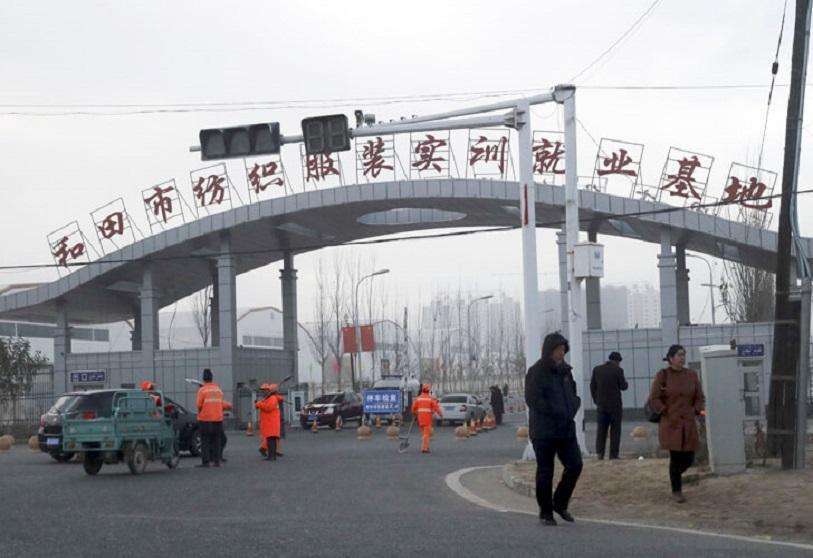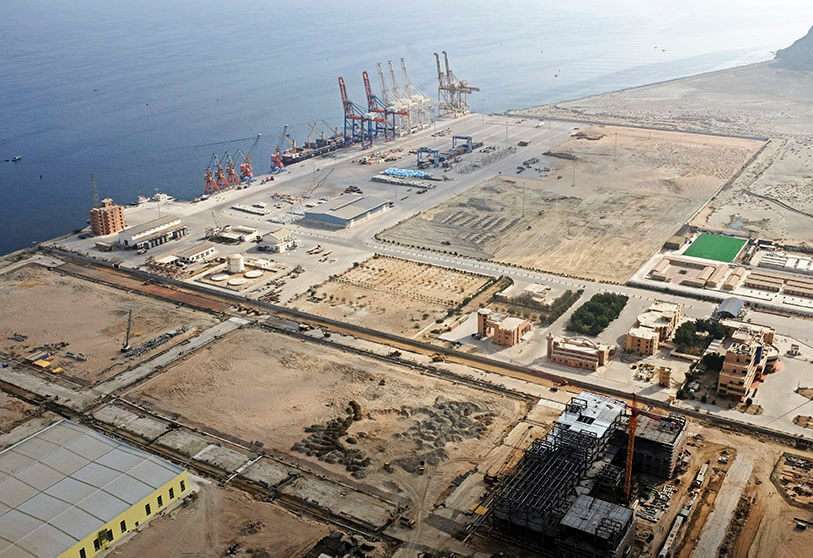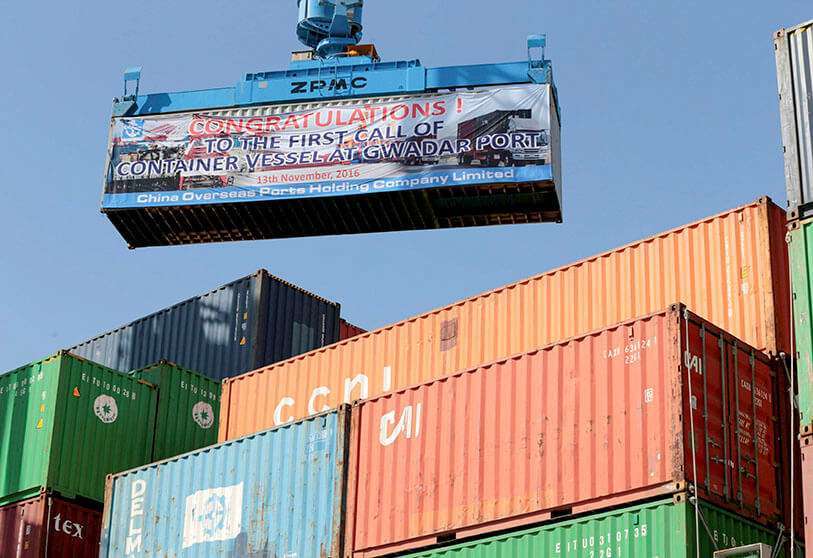China and Muslim countries

China's links with Asian Muslim countries have formed a block against the United States and the countries that maintain relations with it. Huntington in his book "Clash of Civilisations" already spoke of this Confucian-Islamic alliance and how, without being a direct front, it would mean a loss of power for the West.
Today, it is through programmes such as the New Silk Road Initiative (The Belt and Road Initiative) that bilateral agreements between China and many Muslim countries have grown. It should be borne in mind that Asia is home to 65 per cent of Muslims and is the continent of birth of most Muslims as well as of self-proclaimed Islamic states.
In order for China to continue its economic, energy security and influence expansion, it must first control Asia - East, South, West and Southeast Asia.
On 26 March 2021, the Sino-Iranian agreement was signed that will provide 25 years of Chinese investment and collaboration with Iran. This agreement would expand China's presence in many sectors, from energy and banking to telecommunications and infrastructure. It would also offer military cooperation, including joint training, as well as defence research and cooperation. In return, China would receive a steep discount on its supply of Iranian oil for the next 25 years.

Relations between the two countries are not new; it was in 1979, following the establishment of the Islamic Republic of Iran and the beginning of China's post-Mao transformation, that they were normalised again. This shift caused Iran to move away from positioning itself with the "capitalist" or "pro-US" bloc and to broaden its relations with developing and "anti-imperialist" countries. The victory of the Islamic Revolution in Iran marked a fundamental change in Iran's foreign policy, putting an end to the pro-Western policy. Iran adopted a so-called revolutionary perspective in its foreign policy, based on what came to be known as the slogan "Neither East nor West". The new foreign policy, while distancing itself from Western and pro-Western countries, favoured expanding relations with revolutionary, non-aligned and Third
World countries. Simultaneously, China was also undergoing significant changes in its foreign policy in the framework of a much larger transformation taking shape within the Chinese Communist Party, and it was in 1978, a year before the Iranian change, that the 11th Congress of the Chinese Communist Party decided to take a reformist line in government.
There is some speculation that the new deal could bring $400 billion in Chinese investment to Iran, an unwritten figure but one that would follow China's policy of buying infrastructure and influence through large investments. With this, Iran strengthens its relationship with its main oil buyer and gains strength in the face of negotiations with the United States, having its main rival on its side. This strength can be put to the test in the negotiations for a new nuclear agreement.
The confrontation between Muslim countries exists, and on most occasions a distinction can be made between two blocs, Shiite and Sunni, but also between pro-Western and those opposed to the West, who coincide with those who have a good relationship with China. For those who oppose the Western model and the US presence in the region, China is a good ally; it is an actor that rivals the United States and provides them with a bargaining chip to try to position themselves as leaders in their region, as Iran intends to do.
22 May 2021 marked the 70th anniversary of bilateral relations between Pakistan and China, years of economic and military cooperation. Growing military cooperation between the two nations includes arms agreements, defence agreements and joint exercises.
This friendship between the two countries is of concern to both the US and India. The former because of China's entry into Afghanistan and the growing and long-standing Chinese military movement in neighbouring Pakistan. For India, a member of QUAD and a historic ally of the Americans, foreign military investment in Pakistan is always a concern, especially if it comes from China. Both states are direct rivals, and their alliance is a way of blocking it. India's concern goes beyond the Kashmir conflict to the terrorist issue, as it formally accuses Pakistan of financing terrorism inside the country.

China's ties with Pakistan cannot be explained simply as a balancing function in the China-India-Pakistan arc, but goes beyond that. Pakistan has not only supported China in its internal conflicts but has also acted as a buffer state on China's western borders, curbing Islamic expansion where it believed certain Uighur members were operating, helping China with the Uighurs even as Muslims.
Another important factor is Pakistan's geographic location that connects China with West Asia, a staging ground for the Belt and Road Initiative (New Silk Road). Chinese interest in Afghanistan has increased since the announcement of the US exit from the country, seeing an opportunity to dominate the region. This interest is not new; in 2019, bilateral trade between China and Afghanistan doubled from $338 million (2013) to $629 million (2019), according to Chinese customs data. In 2013, China's Overseaes Port Holding Company took over the management of the port of Gwadar (Pakistan), which is key to Afghan-Chinese trade and trade across Central Asia, as well as to the connectivity of China's expansion policies in the Arabian Peninsula and Africa.
The acquisition of the port's management was carried out in the same way as China has done in the port of Valencia or other European and African ports. It is through private companies owned by Chinese nationals or ethnic Chinese expatriates, the Huaqiao, that China is able to take a further step in its economic expansion and influence in the world. The Chinese government uses its citizens as a geopolitical weapon.
Malaysia, a Muslim-majority country with Islam as its official religion and a significant Chinese population, has China as its largest foreign investor and sees how its geographical location can improve its relationship with the Asian giant. The Sino-Malaysian partnership aims to speed up trade, reduce customs bottlenecks, attract Chinese investment in Malaysian ports and develop the port of Malacca, which aims to be the largest in Southeast Asia by 2025. This partnership with Malaysia connects Chinese goods to Singapore and the rest of the Indo-Pacific, as well as ensuring the flow of Chinese trade through the Straits of Malacca.

To strengthen this partnership, there will be an ongoing collaboration between ten Chinese ports (Dalian, Shanghai, Ningbo, Qinzhou, Guangzhou, Fuzhou, Xiamen, Shenzhen, Haikou, and Taicang) and six Malaysian ports (Klang, Malacca, Penang, Johor, Kuantan and Bintulu).
In order to pursue its policy of economic expansion and influence beyond its own region, China needs to control the Indo-Pacific, including the ASEAN countries in its strategy and avoid passing through ports and infrastructures of India and other pro-Western countries. Malaysia is a solution for its route and a way to strengthen ties with ASEAN, at a time when a QUAD offensive to China's expansionary policy is possible.
In their foreign policy, Muslim-majority countries are often characterised by advocacy and engagement with other Muslims, groups, states, minorities and others. Their position in armed or diplomatic conflicts tends to favour the Muslim side, as is already the case in the Arab-Israeli conflict.
In the case of the persecution of the Uighurs in China, on the other hand, it is different. Countries such as Pakistan and Turkey have even "returned" Uighur exiles to China in order to maintain their economic and military alliance with the Asian giant. The Turkish case is the most peculiar, as despite maintaining strong cultural ties such as sharing a Turkic language, a very similar flag and the constant support of the Turkish people for the Uighurs, the Turkish government gives priority to agreements with China.

This case offers a very different narrative to that of Pakistan and Turkey in the recent escalation of violence between Israel and Hamas, as the two countries together with Iran and Malaysia considered forming a military alliance with the aim of protecting the Palestinians. These developments are an example of the functioning of the Sino-Islamic bloc. Internationally, they maintain the same positions, being more intransigent towards the pro-Western bloc and more tolerant and permissive towards China.
The Sino-Islamic bloc has been defined as the offensive or opposition to the West. With China as a leader emerging as a global superpower, it has a long way to go. Through China's interest in expansion and its rivalry with the US, Islamic states such as Iran, Pakistan and Malaysia have the opportunity to challenge the other actors in their region and gain greater influence there.
The West is currently suffering from a loss of global influence, followed by internal tensions and fractures. Nevertheless, it is and will try to hinder China's growth and empower those states with which it has a stronger relationship. Policies such as the Abraham Accords will seek to make the US and its allies lead in the region, opposing the Sino-Islamic bloc in this case led by Iran. The Belt and Road Initiative will be a key point of attack for QUAD and probably the most difficult, as it is one of the most widespread Chinese policies. The ongoing rivalry between the US and China's orbit will increase and the Sino-Islamic bloc will be key to addressing it.
Meritxell Perelló Pinto/Contributor to Sec2Crime's area of Armed Conflict and Terrorism Prevention of Sec2Crime.
- https://thediplomat.com/2021/06/chinas-afghanistan-challenge-and-the-central-asian-dilemma/
- https://asia.nikkei.com/Politics/International-relations/China-and-Pakistan-ink-military-MOU-to-counter-US-India-pact
- https://carnegieendowment.org/2021/05/24/how-china-and-pakistan-negotiate-pub-84592
- https://www.iiss.org/blogs/analysis/2021/04/china-iran-deal
- https://www.clingendael.org/publication/new-map-belt-and-road-initiative
- Shariatinia, Mohsen. (2011). Iran-China Relations: An Overview of Critical Factors. IRANIAN REVIEW of Foreign Affairs. 1.


